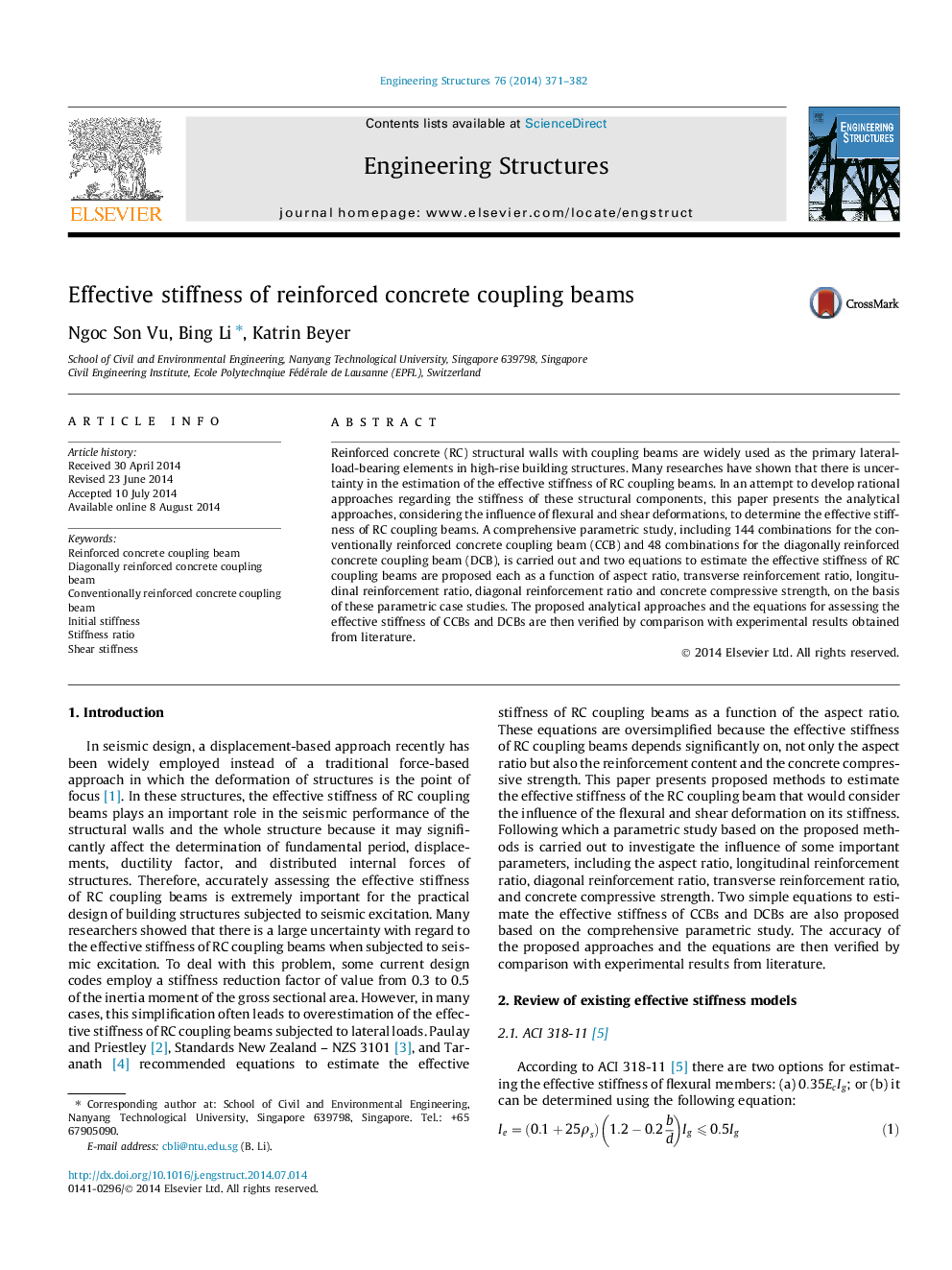| Article ID | Journal | Published Year | Pages | File Type |
|---|---|---|---|---|
| 266606 | Engineering Structures | 2014 | 12 Pages |
•This paper presents the analytical approaches to determine the effective stiffness of RC coupling beams.•There is uncertainty in the estimation of the effective stiffness of RC coupling beams.•A parametric study is carried out to investigate the influence of some important parameters.
Reinforced concrete (RC) structural walls with coupling beams are widely used as the primary lateral-load-bearing elements in high-rise building structures. Many researches have shown that there is uncertainty in the estimation of the effective stiffness of RC coupling beams. In an attempt to develop rational approaches regarding the stiffness of these structural components, this paper presents the analytical approaches, considering the influence of flexural and shear deformations, to determine the effective stiffness of RC coupling beams. A comprehensive parametric study, including 144 combinations for the conventionally reinforced concrete coupling beam (CCB) and 48 combinations for the diagonally reinforced concrete coupling beam (DCB), is carried out and two equations to estimate the effective stiffness of RC coupling beams are proposed each as a function of aspect ratio, transverse reinforcement ratio, longitudinal reinforcement ratio, diagonal reinforcement ratio and concrete compressive strength, on the basis of these parametric case studies. The proposed analytical approaches and the equations for assessing the effective stiffness of CCBs and DCBs are then verified by comparison with experimental results obtained from literature.
